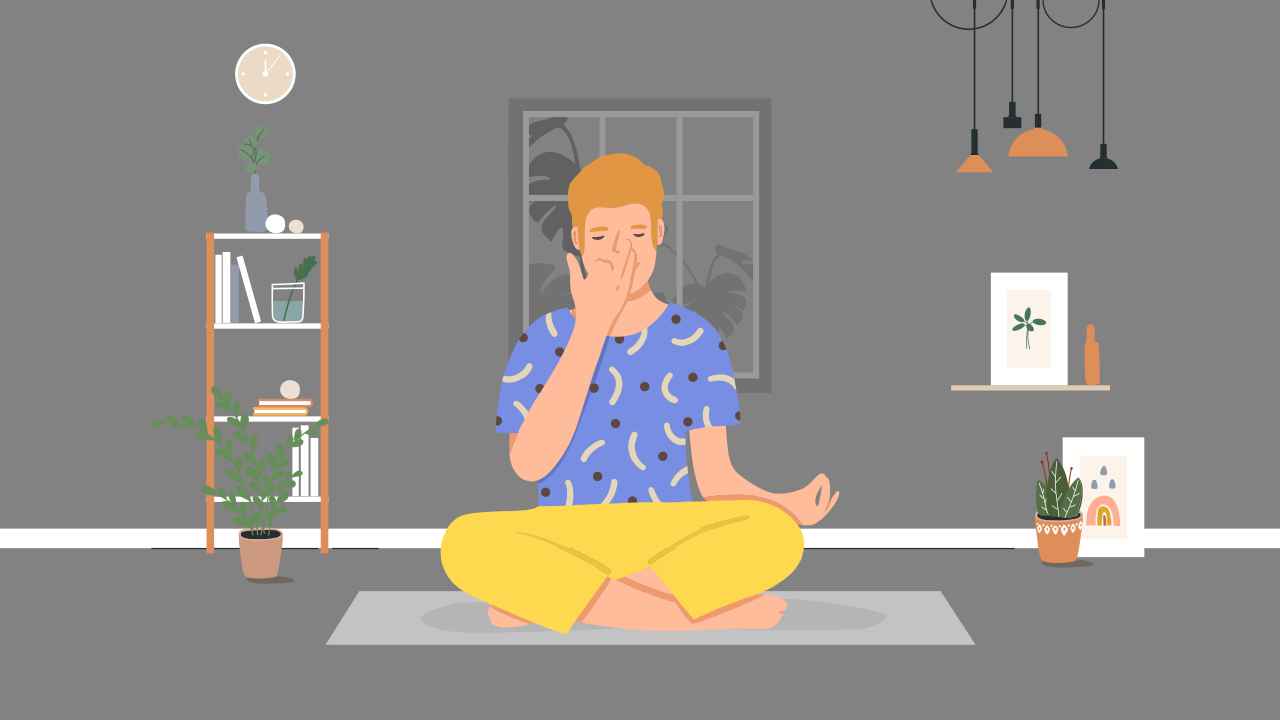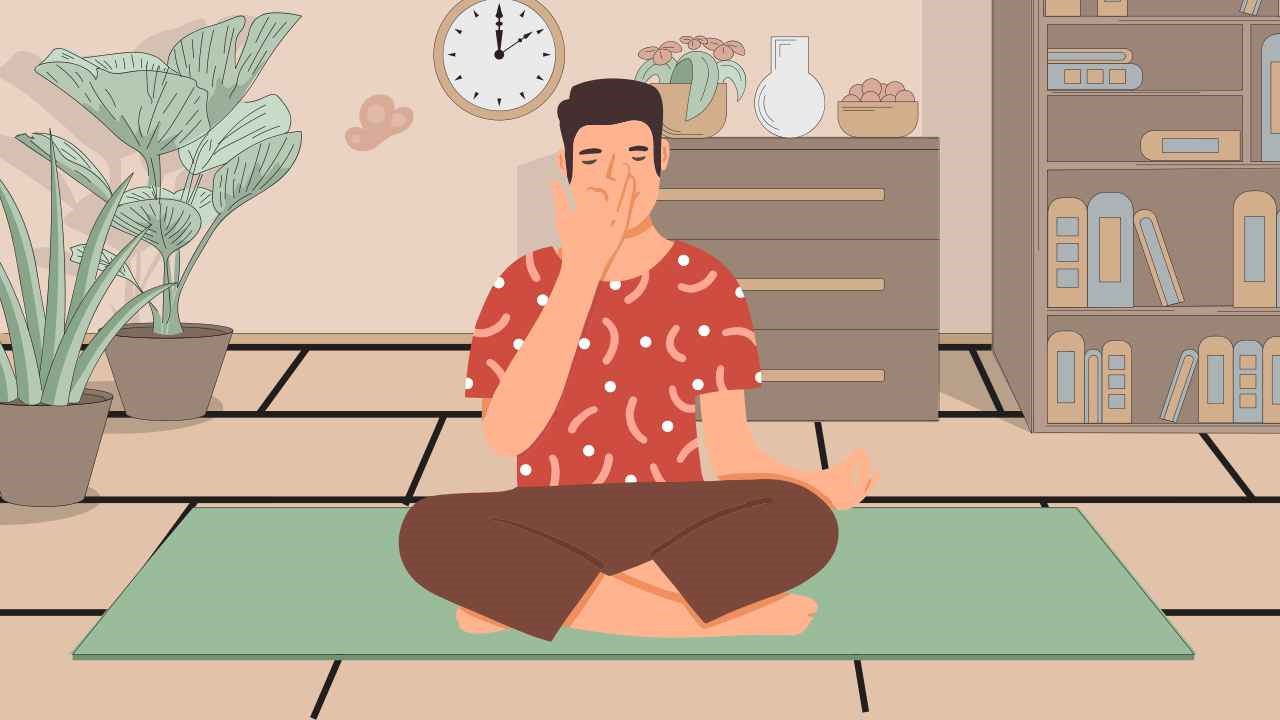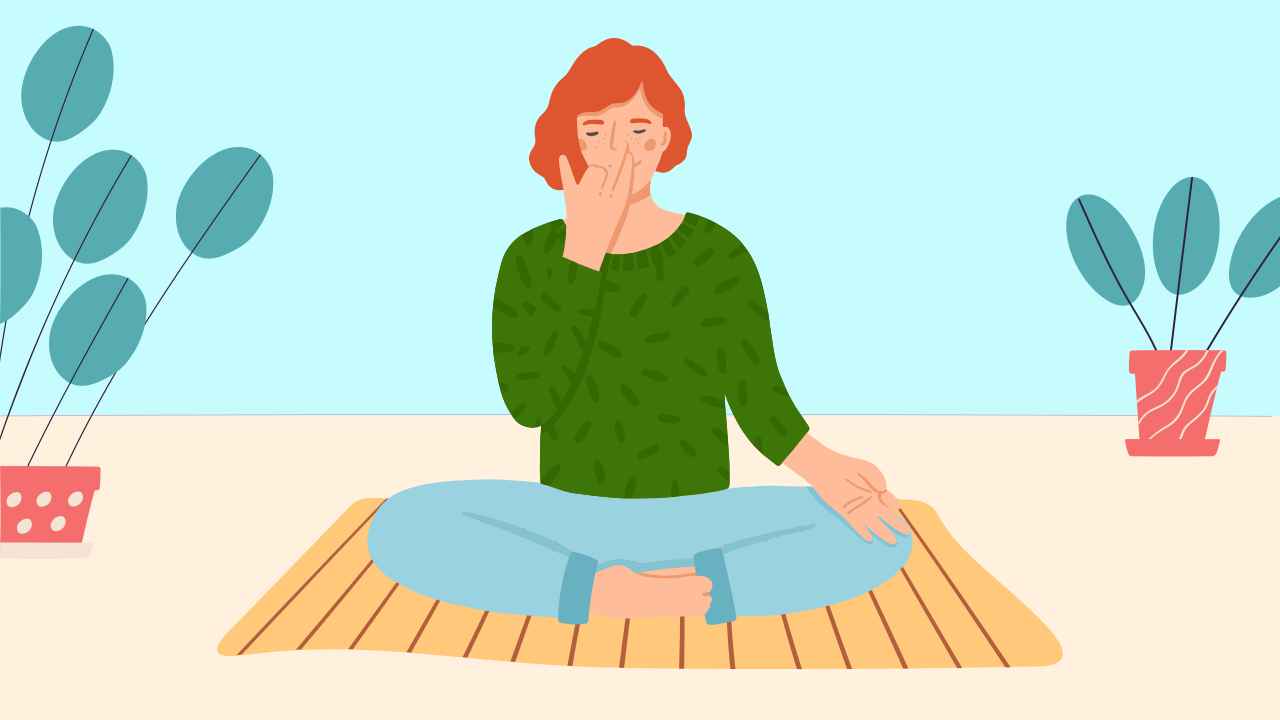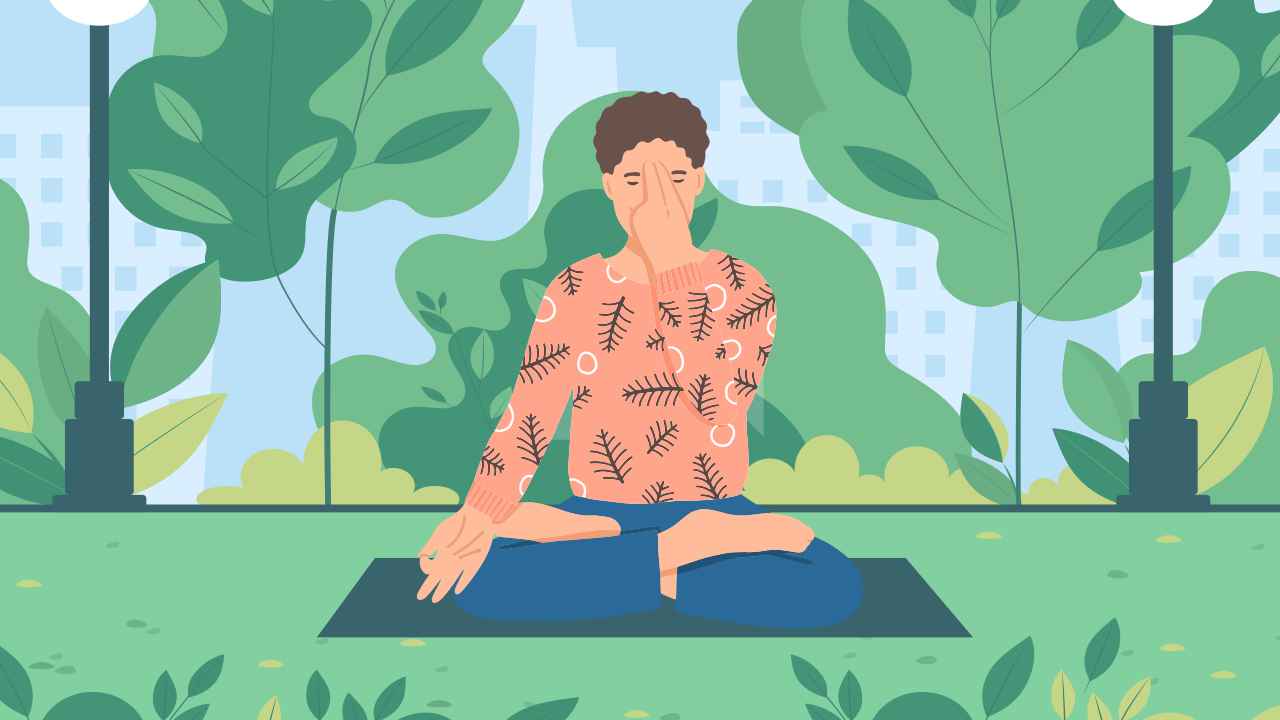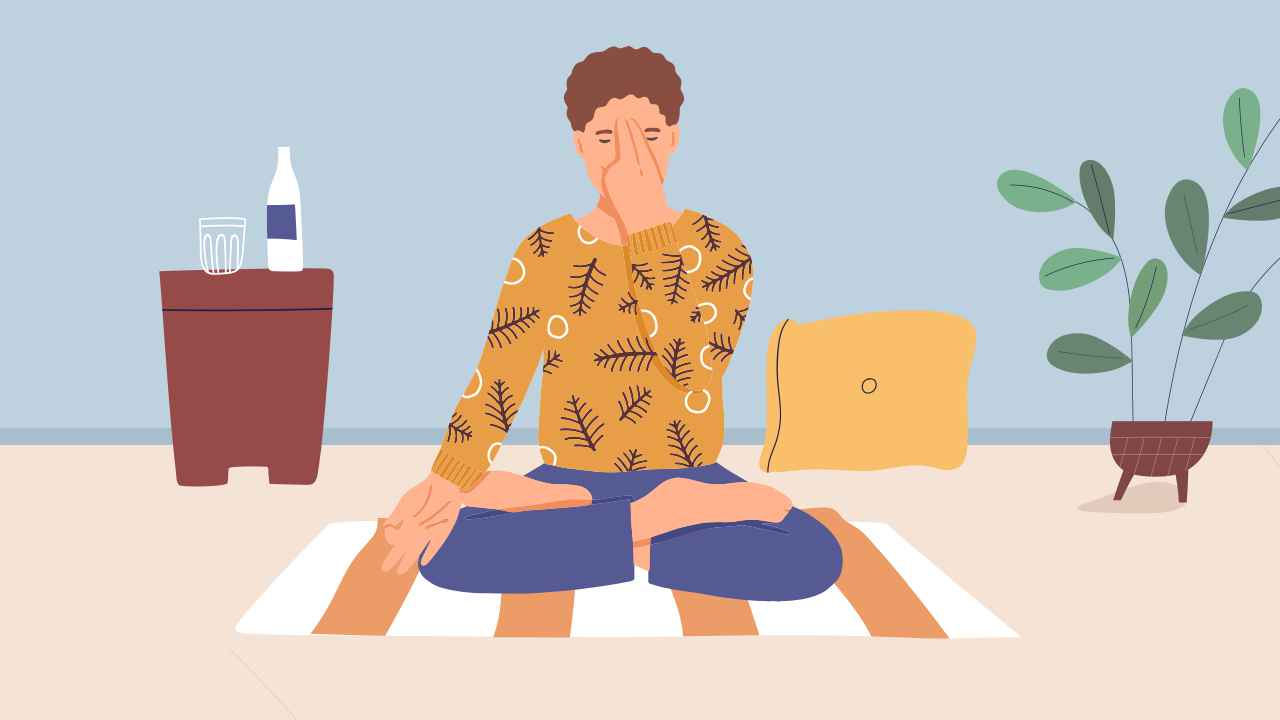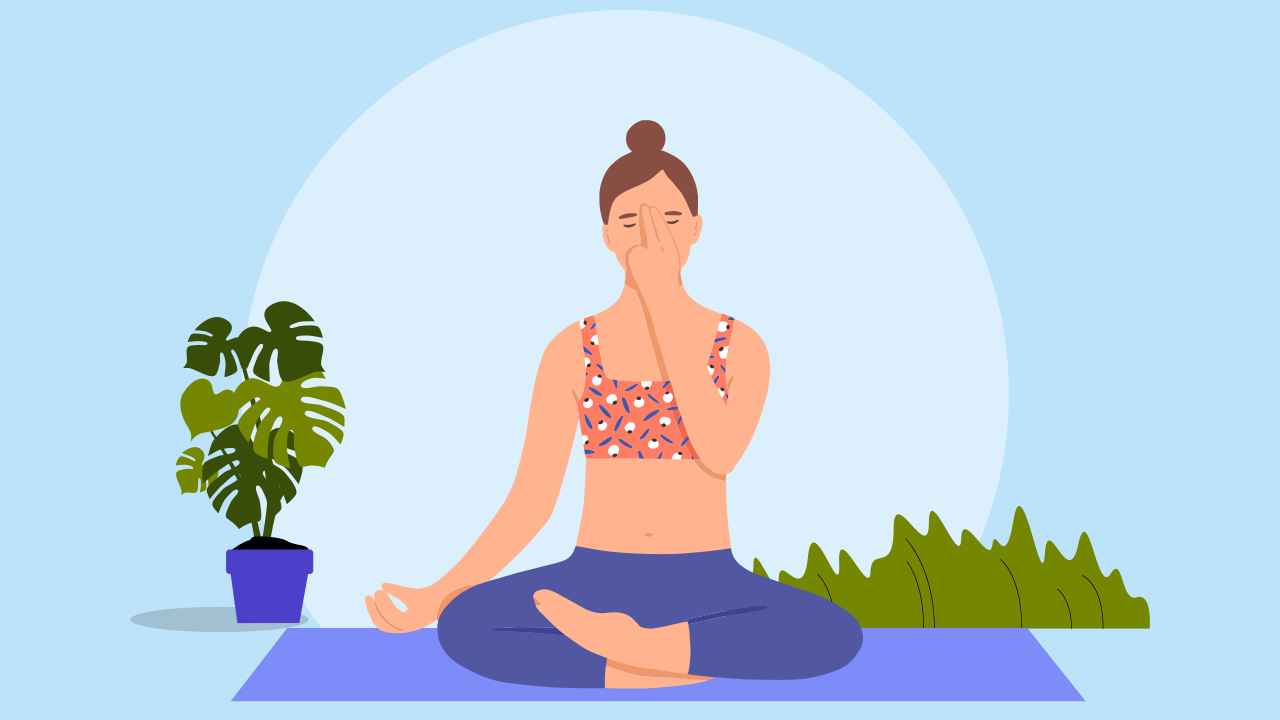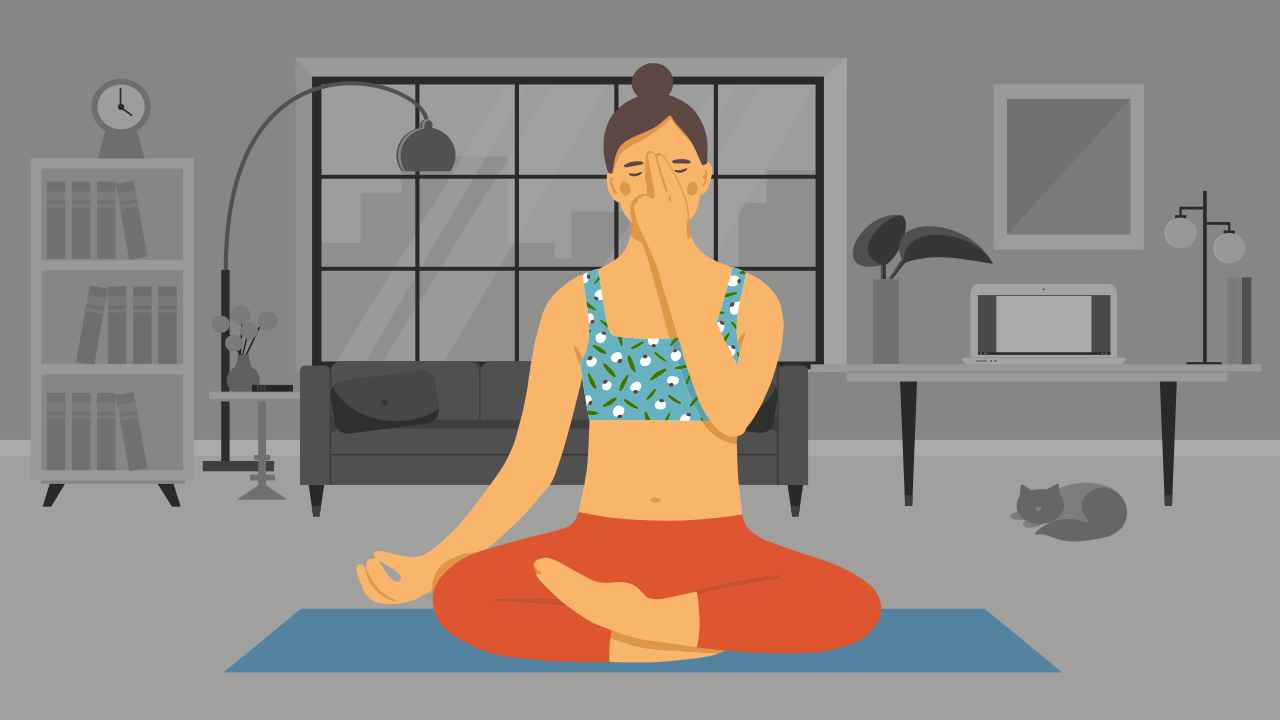
How Effective Is Your Home Yoga Practice?

If you are practicing yoga at home, mindfulness is a great way to connect and explore within. The idea of a personal practice in yoga comes from a concept called Svadhyaya, which is the study of one’s own self to realize one’s true potential. A daily home practice enables you to study and understand your body’s needs and limitations. It focuses your attention on details that may be missed in a studio or a group class.
According to research conducted by the University of Maryland with yoga practitioners from 15 Iyengar studios in the United States, home practice — comprising asanas, meditation, pranayama, and philosophy — did better on most health-related aspects than years of practice and class frequency. The study considered physical, behavioral, and psychological wellbeing of the participants. They found positive mindfulness, subjective well-being, higher fruit/ vegetable consumption, and lesser BMI, sleep disturbances and fatigue, in those who developed a home practice. To sum it up, a personal practice can magnify the benefits of yoga by focusing on what suits you best.
Here are some of the benefits that you can discover for yourself by committing to a daily yoga practice.
Builds discipline
A personal practice at home requires strict disciplining on your behalf. Distractions like chores, kids, family, and television can be challenging.
Reminding yourself of all the benefits of a yoga session, or the calmness that accompanies a Savasana, or even the mental clarity achieved post meditation can be a great way to return to your practice. If you are a beginner struggling to commit, just take time out to sit on the mat, the rest will flow.
Also read: How to Stay Motivated in Your Yoga Practice?
Allows customization
Your home practice is your best chance at working with your body and connecting with its intelligence. You can choose from many yogic practices and move intuitively. Additionally, you can experiment with the time, pace, tone, and intensity. You can choose what posture can come next, what flow to take, how long to hold a certain pose, and most importantly when to rest.
No comparisons
You can become aware, understand, assess, analyze, and introspect your own feelings, emotions, and breath. You can really integrate mind-body-breath and experience the posture rather than performing them mechanically. At home practice, you need not try and master a pose or compare with your neighbor or try a difficult variation. The beauty of a home practice is that it has no pressure or expectations.
Pocket-friendly
The best thing about a home practice is that you do not have to spend a penny to travel to a studio or buy a subscription for an hour-long session.
However, a home practice is no substitute for a hands-on training in the presence of a knowledgeable expert. It is, though, a sustainable alternative for those on a budget or looking to find their personal rhythm.
References
1. Lloyd A, White R, Eames C, Crane R. The Utility of Home-Practice in Mindfulness-Based Group Interventions: A Systematic Review. Mindfulness (N Y) 2018; 9: 673–92.
2. Ross A, Friedmann E, Bevans M, Thomas S. Frequency of yoga practice predicts health: results of a national survey of yoga practitioners. Evid Based Complement Alternat Med 2012; 2012: 983258.
3. Park T. WHY PRACTICE YOGA AT HOME? Yoga Basics. https://www.yogabasics.com/connect/why-practice-yoga-at-home/ (accessed April 19, 2021).
4. Cullen S. The Benefits of a Home Yoga Practice. Kripalu. https://kripalu.org/resources/benefits-home-yoga-practice (accessed April 19, 2021).
5. Hanley K. The Beginner’s Guide to Home Yoga Practice. Yoga International. https://yogainternational.com/article/view/the-beginners-guide-to-home-yoga-practice (accessed April 19, 2021).


